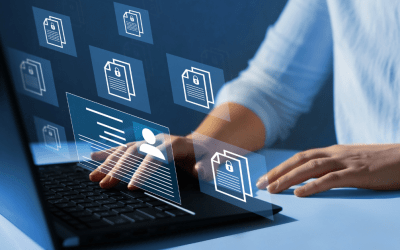According to the World Economic Forum Global Risks Report 2021, cybersecurity failure was rated alongside extreme weather, climate action failure and human-led environmental damage as one of the risks with the highest likelihood.
Cybercrime researcher Cybersecurity Ventures estimates that global cybercrime costs will rise 15% year-on-year to reach US$10.5 trillion annually by 2025, up from US$3 trillion in 2015.
And attack vectors have only increased in scope and prevalence as the world transitioned en mass to remote working in response to mandated lockdowns due to COVID-19.
Even when the pandemic is over, cybercrime levels will continue to rise amid an acceleration in workplace digitalisation. The increased reliance on digital platforms and device fragmentation means workers spend more time online and access office networks from home and while on the move.
This operating model poses numerous challenges for businesses, particularly as cyberattacks have become more prevalent and sophisticated in an era of automation, social engineering, artificial intelligence (AI) and quantum computing.
The need to constantly monitor and react to the multitude of current and emerging threats to the corporate network has surpassed the capacity of human-only cyber security teams. And it is impossible for security experts to tackle automated threats with manual responses alone. A global skills shortage merely exacerbates an already prolific problem.
Within this context, intelligent digital technologies are ideally suited to solve many of the most pressing and complicated cybersecurity challenges facing the modern enterprise and create greater cyber threat resilience.
When combined with machine learning (ML), AI provides a scalable, iterative and dynamic solution to the constantly evolving cybersecurity threat landscape.
AI-based solutions can automate multiple functions to support human teams across diverse areas related to cybersecurity. These tools include real-time threat exposure monitoring and automated attack detection capabilities that can prioritise and respond to security alerts as they happen.
Furthermore, AI-based security tools can analyse big data sets from millions of cyber incidents to detect threats like phishing scams or new malware variants. These technologies are also better able to identify data and threats that typically escape the human eye.
Similarly, automated network monitoring tools can track daily user activity and analyse this information in real time to detect anomalies and react with an appropriate response.
For instance, AI algorithms used in behavioural analytics solutions track a user’s online behaviour. By identifying patterns related to how the user typically uses their device or online platform, the algorithm will pick up any unusual activity. In these instances, the system can automatically flag anomalous behaviour as suspicious or even suspend the user or block their device.
AI and ML can also perform important day-to-day operational security tasks, such as an IT asset inventory. By creating and maintaining an accurate and detailed record of all devices, users, and applications that access the company network, security teams can apply rules and allocate different levels of password protection and authentication to various systems to improve compliance. reduce security risks and mitigate vulnerabilities.
Moreover, AI can expedite onerous legacy manual network security administrative processes such as security policy formulation, update and patch deployment, and organisational network topography analyses. Automating these tasks allows internal security specialists to focus on other value-adding areas in the business.
Importantly, self-learning AI systems can track the evolving threat landscape with predictive capabilities that can shift cybersecurity from a predominantly reactive to a proactive process.
For example, breach risk prediction capabilities can identify where and anticipate how attackers are most likely to gain access to the company network, while vulnerability management tools continually draw data from past experiences and present threats to learn and identify a new modus operandi used in attacks.
And iterative and dynamic AI-enabled cybersecurity systems get smarter with every data point and experience they analyse, which makes them more accurate in their threat detection capabilities. In this way, security specialists can train AI systems to and run pattern recognition to detect early indications of threats from malware or ransomware attacks before they enter the network.
This predictive intelligence empowers cybersecurity teams to continually adapt their strategy, more accurately allocate resources and deploy the most appropriate tools to address any identified weaknesses, plug any potential gaps in a company’s network security, and preempt emerging threats.
DarkTrace is a world-leader in self-learning AI for Cybersecurity and Network Detection and Response. DarkTrace offers products that learn the day-to-day patterns of your environment in order to discover unpredictable cyber-threats protecting the integrity and resilience of your systems. Self-learning capabilities allows for the identification of threats in real time regardless of whether they have been seen before.
About DataGroutIT
DataGroupIT is Africa’s leading Value-Added Distributor (VAD). By partnering with the best selection of established and emerging technology vendors across the globe, we, provide complex solutions for any size business, including Enterprise and SME markets across the African continent.
Our product portfolio offers comprehensive solutions for IT Security, Infrastructure and Enterprise Software.
We are fully committed to our business partners. Channels & vendors success is our #1 mission. Our professional teams across Africa deliver exceptional sales, presale, logistic, marketing and financial support that create the ultimate platform to accelerate our business partners’ success.
Contact Us today to find out more.




